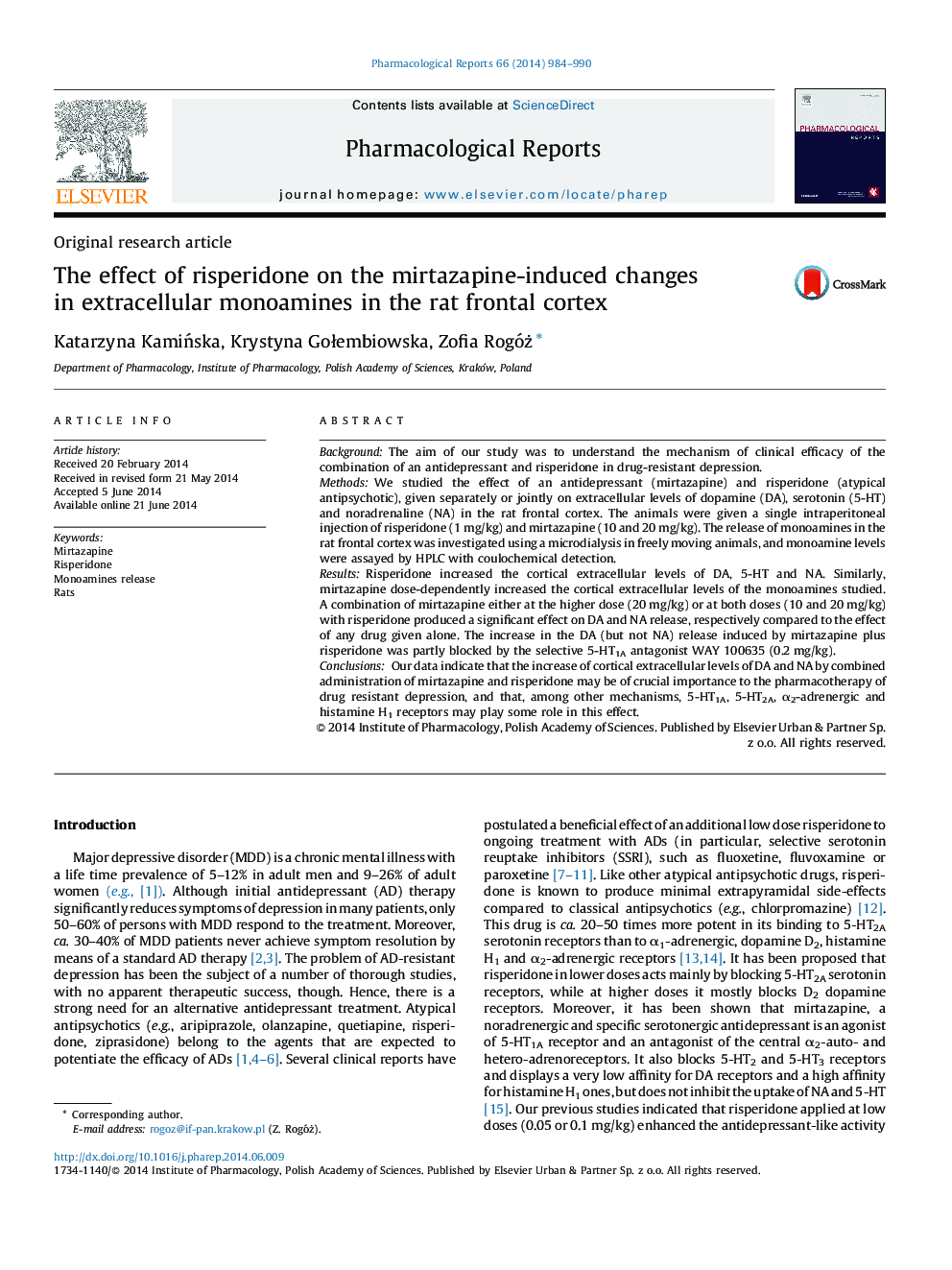| Article ID | Journal | Published Year | Pages | File Type |
|---|---|---|---|---|
| 2010466 | Pharmacological Reports | 2014 | 7 Pages |
BackgroundThe aim of our study was to understand the mechanism of clinical efficacy of the combination of an antidepressant and risperidone in drug-resistant depression.MethodsWe studied the effect of an antidepressant (mirtazapine) and risperidone (atypical antipsychotic), given separately or jointly on extracellular levels of dopamine (DA), serotonin (5-HT) and noradrenaline (NA) in the rat frontal cortex. The animals were given a single intraperitoneal injection of risperidone (1 mg/kg) and mirtazapine (10 and 20 mg/kg). The release of monoamines in the rat frontal cortex was investigated using a microdialysis in freely moving animals, and monoamine levels were assayed by HPLC with coulochemical detection.ResultsRisperidone increased the cortical extracellular levels of DA, 5-HT and NA. Similarly, mirtazapine dose-dependently increased the cortical extracellular levels of the monoamines studied. A combination of mirtazapine either at the higher dose (20 mg/kg) or at both doses (10 and 20 mg/kg) with risperidone produced a significant effect on DA and NA release, respectively compared to the effect of any drug given alone. The increase in the DA (but not NA) release induced by mirtazapine plus risperidone was partly blocked by the selective 5-HT1A antagonist WAY 100635 (0.2 mg/kg).ConclusionsOur data indicate that the increase of cortical extracellular levels of DA and NA by combined administration of mirtazapine and risperidone may be of crucial importance to the pharmacotherapy of drug resistant depression, and that, among other mechanisms, 5-HT1A, 5-HT2A, α2-adrenergic and histamine H1 receptors may play some role in this effect.
